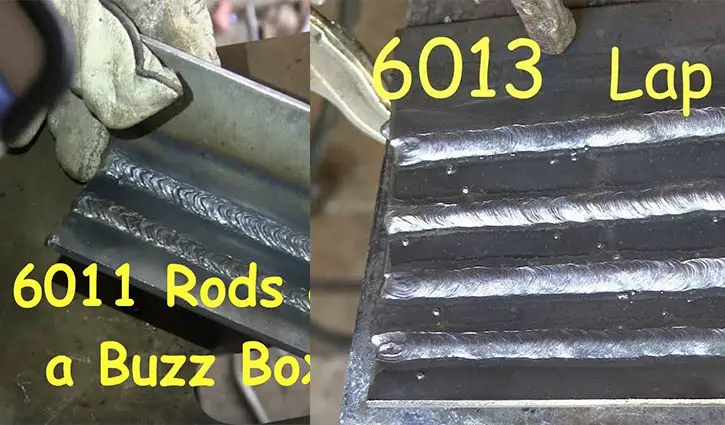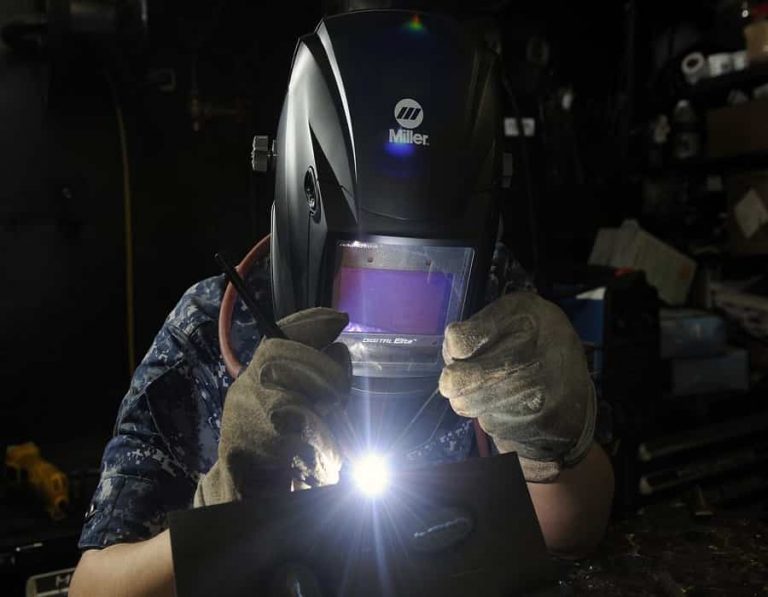6011 vs 6013 Welding Rod: Which One Is Better?
Welding is an essential metal processing operation. Individuals or complete beginners who want to master the welding process need to have a clear idea of the variation of welding rods for different purposes.

Welding is handy when joining different metal pieces together and sometimes in fixing a crack. In this discussion, we will see 6011 Vs 6013 Welding Rod, a comparative guide to choosing the suited one for your job.
Stick rod or arc welding is the most basic process of joining two metal parts. Yet it is the most popular method. Let’s get into the details of these two stick welding rods.
Table of Contents
6011 vs 6013 Welding Rod: Differences and Similarities
In standard arc welding, an electrode generates heat and metal dissipation to create a joint. And the melting temperature comes with the help of high-voltage electricity. However, there is a variation of welding rods with distinct features. So, let us get into the details of 6011 and 6013 now-
6011 Welding Rod
6011 works with both DC and AC electricity. This welding rod is slightly potassium enrichment with a cellulose flux coat.
This electrode is famous among welders because it attaches to rough surfaces. Then again, to work with this stick for welding, you do not need to have the surface of the workpieces to be clean. Also, 6011 can be used at any position. So, you can have any alignment you are comfortable with.
6013 Welding Rod
6013 contains a high portion of potassium for better control over the body. This particular type is for connecting sheet metals. Then again, the surface must be clean for a proper joint. Otherwise, there will be lacking in the meeting sections of the metals.
Individuals should get started with arc welding with this electrode. 6013 is a perfect suit for beginners because of its less penetration.
Electrode 6013 is also suitable for performing welding in all positions. Then again, 6013 is capable of working with both AC and DC.
Read More: MIG Welding Vs Stick Welding – What’s The Difference? (Explained)
6011 Vs 6013, The Differences
You can look at the table below for a good glimpse of the differences. It covers both of the arc welding rods from different aspects.
| Electrode | Current | Coating | Penetration | Tensile Strength |
| 6011 | DCEP; AC | High Cellulose Sodium | Deep | 60.000 PSI |
| 6013 | DCEP; DCEN; AC | High Titania Potassium | Medium | 60,000 PSI |
6011 and 6013 Welding Rods: A Detailed Comparison
Both of these electrodes are similar in some aspects. Yet, there are noticeable differences that should be considered. This separation actually tells where to use which one of these two.
Working Current
6011 is capable of working with DCEP and AC. On Direct Current Electrode Positive (DCEP), the electrode is connected with the positive terminal with the power source, and the workpiece is associated with the negative.
Similarly, 6013 electrodes work at DCEP. Also, it is usable under Direct Current Electrode Negative (DCEN). Here the workpiece is connected with the positive terminal, and the electrode is associated with the negative terminal of the power source. Alternating Current (AC) also works fine with 6013.
Solidification Characteristics
The solidification time varies with different electrodes. The 6011 falls under the fast-freezing category. It means that the electrodes are meant to solidify very rapidly after application. Therefore, it stops any shifting of the weld pool away from the applied area.
The 6013 is a fill-freezing electrode. These rods fall in between characteristics of the fast freeze and fast fill. This means the electrode melts faster and also solidifies more quickly.
Penetration
depends on the thickness of the material. Deep penetration is the requirement when your workpiece is much thicker. 6011 works well with thick metals as it has a deep penetration capability.
Conversely, the 6013 is well-suited for thin metals. Meaning this has a medium to low penetration through the workpieces.
Usage
Of its good penetration capability, 6011 is widely used in the maintenance industry. Manufacturers use this electrode for creating metal structures from scratch. Also, it is well suited for the mining and shipping industry because of its ability to work on galvanized, rusty, rough and painted surfaces. The final output at the joining portion is not smoother. The appearances at the joining portion are no big deal with the bigger structures.
6013 works well with sheet metal. It is suitable for thinner structures. Then again, it is used for structures where appearance is important. Structures like a statue, bus or car body, and furniture are suitable for a weld with 6013. The work material must be clean to do the welding job correctly.
Working Position
Working position is a crucial factor in choosing a welding rod. For instance, you need to weld upright on a structure building. Then the electrode must deliver the optimum result in that position.
6011 is suitable for welding all positions. It works well with the vertical up and overhead welding positions for the most efficient result.
Electrode 6013 is also capable of welding in all positions. Therefore, for a good joint, you can position yourself so you can see the tip of the arc.
Fill
The 6011 electrodes can generate a medium fill on the welding area. Which eventually ends up being a good and strong bond.
You will have a narrow fill with the 6013 electrodes. So, it is suitable for bonds that do not need that much strength in the joining area.
Conclusion
Choosing the arc welding rods depends on the goal you want to achieve. Focus on some aspects of the outcome you want to achieve; for instance, you may focus on the appearance of the weld, the strength of the joint, type of the fill, and working materials.
Comparing 6011 Vs 6013 welding rods should help you conclude which one you will choose. Know your target and choose the welding rod according to that.






